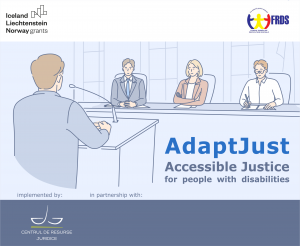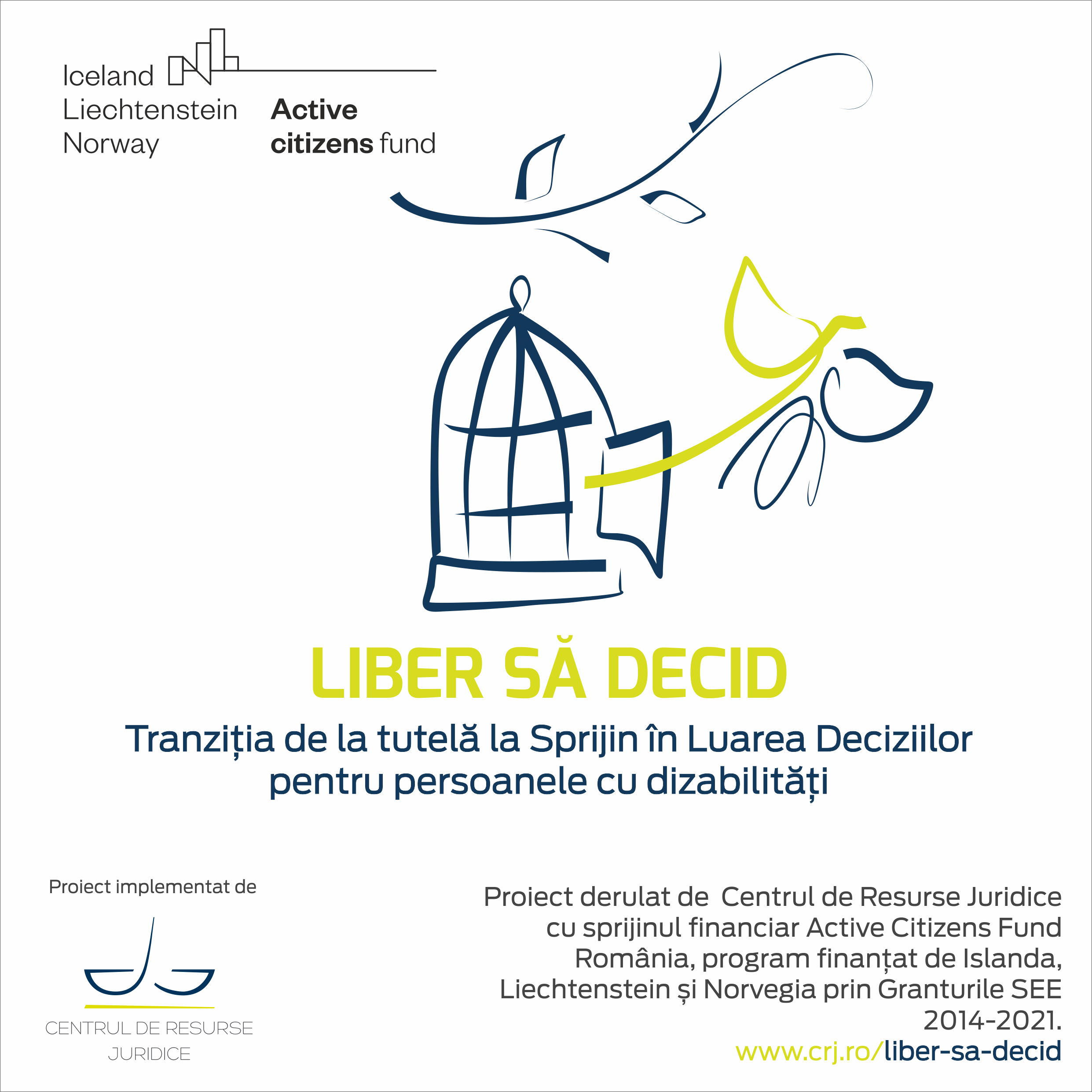Following the violation of human rights observed by the representatives of the CLR in ‘Cora Home’, we address the following requests to the representatives of central and local public authorities:
- We request the Minister of Labour – Mr. Marius-Constantin Budăi to send a written clarification containing the reasons that led to the institutionalization of people with intellectual and/or psychosocial disabilities and/or elderly homeless people from social or psychiatric care homes and the reasons why social services were not provided in community according to the legal provisions on the matter;
- We request the Minister of Health – Mr Alexandru Rafila to verify whether and how the procedure for maintaining non-voluntary admission for persons admitted to the psychiatric hospital in Bălăceanca is respected;
- We request the President of the National Authority for the Rights of Persons with Disabilities, Children and Adoption (ANPDPD) and the Director of the National Agency for Payments and Social Inspection (ANPIS) to verify the legality of the transfer procedures and the presence of persons with intellectual and/or psychosocial disabilities in the Residential Care and Assistance Centre for Dependent Persons ‘Cora Home’;
- We request the Director of (General Directorates for Social Assistance and Child Protection (GDASPC) Ilfov to verify the way in which the residents of the Residential Care and Assistance Centre for Dependent Persons ‘Cora Home’ are institutionalized – in view of the suspicions of arbitrary institutionalization and taking into account the Romanian conviction in the case of N. v. Romania;
- We call on the Ministry of Labour and the ANPDPD to make the procedures for transferring beneficiaries from one social care home to another, public and transparent. The number of beneficiaries in each social care home (including homes operating on the basis of a provisional licence), where the beneficiaries come from, and who is responsible for the services provided to them. We also ask the Ministry of Labour and the Monitoring Board to publish data on the deaths registered in publicly and/or privately funded private social care homes (number, causes) as well as data on the number of institutionalized people with disabilities in the elderly social care homes;
- We require to know which central and/or local public authorities should have implemented the legal provisions on the evaluation and monitoring of the social services provided in Cora Home and which authority is responsible for referring any violations to the competent courts.
How many people are locked up in Cora Home?
The number of residents does not meet the legal requirements. Although officially there were 48 places, at the time of the visit there were around 60 adult residents with intellectual and/or psychosocial disabilities and elderly people accommodated in the social care home (none of the staff could provide the exact number of people accommodated in the institution at the time of the visit). Many of the residents had urinary incontinence, were bedridden, moved with a frame or could not move themselves at all, due to the lack of specific devices (lift, chair, frame, etc.) In September, the coordinator of the social care home indicated that they had received indications to reduce the capacity of the social care home but until the visits of the CLR, no measures had been taken.
How did the residents end up in “Cora Home”?
Some of the residents interviewed by the CLR complained that they did not give their consent to the institutionalization in the “Cora Home”. According to what they said, some of them arrived in Cora Home after having transited through a “Gherbera” social care home and another one in Ștefăneștii de Jos or de Sus, being “loaded” on buses in the middle of the night and transferred from one social care home to another.
“Cora Home” had contracts with the Social Welfare Department of the Pantelimon City Hall, families and were about to sign the contract with GDASPC Ilfov. No further information was given about the type of services contracted, the contractual obligations of the provider or the persons responsible for monitoring these contracts within the local public administration authorities. Discussions with residents revealed that most apparently came from Bălăceanca, from the psychiatric hospital or had no shelter or carer.
Arbitrary deprivation of liberty
Resident complaining of unlawful confinement and deprivation of liberty.
During the first visit, one of the residents complained that she was being held against her will at the request of one of her daughters. Although she had informed the social care home’s staff that she no longer wished to live there, and the lawyer of the second daughter had notified the care that they had no grounds to keep the resident in the care home against her will, the social care home’s representatives took no action to resolve the situation, maintaining the situation of deprivation of liberty without any grounds.
In view of the findings on the spot of the representatives of the CLR, it can be concluded that the situation of the resident in question is nothing more than a concrete translation of the material element of the objective side of the offence provided for and punished by the provisions of Article 205 of the Criminal Code which regulates “deprivation of liberty unlawfully”. We can also talk about “persons unable to express their will or to defend themselves”. The provisions of the Criminal Code in force must be interpreted in accordance with Article 23 of the Romanian Constitution, which guarantees the inviolability of a person’s freedom.
On the occasion of the second visit, organized at the express request of the resident in question, although she initially asked to be allowed to leave the social care home, she told us that she wished to remain in the care home until her legal situation was clarified and she managed to take steps to return home, and that she did not wish to complain about her situation at that time. The resident’s situation changed after her daughter, who also initiated the institutionalization procedure, took steps to transfer her mother against her will to another social care home. It is important to note that the manager of the Cora House (Grandma’s House Anastasia) told us that, under the arrangements made by the resident’s family, she would no longer be allowed to have contact with any visitors. We reiterate that no definitive measure of limitation of capacity has been imposed on the resident in question. The situation of the resident in question is a concrete case of involuntary, unjustified and unlawful admission following a short stay in a psychiatric hospital, (probably) to satisfy a number of material interests of her family. The representatives of the CLR informed the lady’s family of the unlawfulness of the measures taken. The CLR called the police on 112 following threats from the elderly woman’s son-in-law and daughter, who threatened to transfer her to another place in Ilfov county the same day. A police team arrived at the scene and informed the family that the lady could not be transferred against her will.
Sequestered in the social care home or on upper floors
Most of the residents have difficulties with mobility and balance. We met people who were crying because they couldn’t get out of bed, were tired of going down or up stairs or didn’t have a chair to move around in. CLR representatives saw only one armchair on one floor. One resident was crying and asking the nurse to help him get to the hospital because he wasn’t feeling well. Another resident complained to the CLR team that she was being held against her will in the social care home at the request of her daughter (although she had no protective measures in place) and wanted to go home. On the 2nd floor, in a common hallway, behind a wardrobe was a bed with a lady about 55 years old, the lady was non-disabled “my legs don’t hold me”- we don’t know the diagnosis. The lady says that to get to the bathroom she walks by herself, but crawls on foot. She also went down the stairs by herself – a week ago to go outside – the lady does not have a wheelchair and as previously pointed out, there are several non-disabled people “housed” on the upper floors in the social care home. No information was given about how these people are helped to the social home’s courtyard.
Living in the social care home – living spaces v. living in the community
The living spaces and toilet/hygiene facilities for residents do not meet their needs. Overcrowded rooms with 7 beds, clothes thrown all over the floor in almost all rooms due to lack of closets and storage spaces, people lying on plastic-covered mattresses without pillows, insufficient bathrooms for the large number of residents (one toilet/bed). The windows had no blinds or curtains so the sun was disturbing everyone who wanted to rest. The smell of urine was present on both floors; dirty clothes or used materials (pampers, paper, rags) were thrown on the floor in some areas. The majority of residents were elderly, mobility-impaired and/or with psychosocial or neurological disabilities. They had short haircuts, and were scantily dressed.
In one of the rooms upstairs – 5 or 6 residents were housed in a space with no windows or natural lighting or ventilation; five or six beds, a table, a chair and a pile of clothes thrown in a corner of the room. The reason given by the “accredited social service provider” was a lack of cupboards and storage space.
What are the residents doing?
There are no age-specific activities, residents say they get bored, two of the residents say they help the careres change and feed the non-disabled “I do something too, it passes the time easier, the nurses can’t do it alone, there is a nurse on every floor”. At each visit to Cora Home, 3 employees were observed: the coordinator and one carer per floor. The SRL representative stated that they have contracts with several specialists (social worker, psychologist, doctor) but none of the residents could provide information that they perform activities or interact with the residents according to the legal rules in force.
Residents cannot be visited and cannot leave the premises when they wish. At the time of the visit, visiting hours were posted on the gate from Monday to Sunday between 10-12 and 15-17. However, on a piece of paper stuck on the gate, visitors were told that they were not allowed to visit those staying at the social care home – due to the Covid pandemic. Although the center is located on a gated, uncirculated street, residents are not allowed in the community (shopping, going to the park, walking, etc).
On the second floor, one resident lived in the hallway. From the information received from her she is retired for medical reasons, was an electrician. She does not know if she has any relatives or friends, no one visits her, she does not know if she has any income. She does not have any personal belongings, a bedside table or a wardrobe allocated to her. Her bed is placed behind a chained wardrobe. The mattress is wrapped in cellophane, and only a sheet is placed on top, we have not seen there is a pillow on the bed or any blanket. She has no activity all day, she would like a book. She can’t get around and doesn’t have a wheelchair, she bumbles all over the place (bathroom and downstairs), she hasn’t been out in the yard since she came to this facility. A month later, during the October visit, we found that the same resident was living in the same place, but this time a PVC wall had been installed separating that hallway from the rest of the space, so a room had been improvised for that resident, the only change being that she was now separated from the rest of the floor by a PVC wall.





